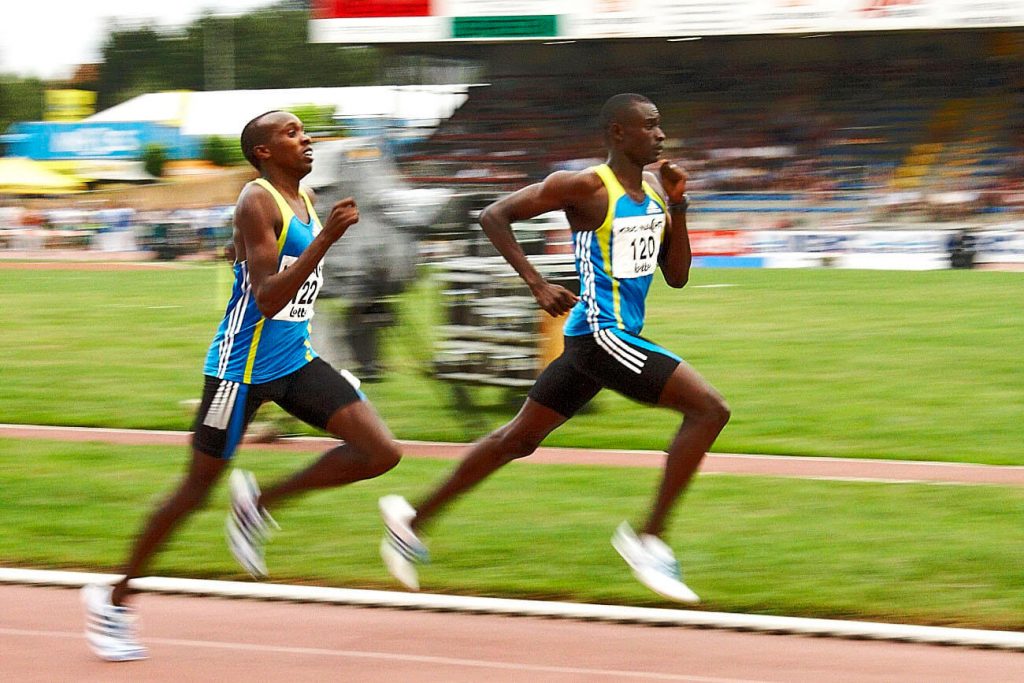In this post we’ll discuss how to change your running technique without thinking about how you run.

Before we begin, try this experiment when you have a spare moment.
Sit yourself down on a bench in your local park and watch how people move as they pass by. Watch both runners and walkers.
Take a look at how far their ankles roll inwards as their feet land, how much their knees bend, how far their hips move forwards and back, and how far their torsos rotate to each side.
Yes going to the park with me is no fun.
What you’ll likely notice and what I find endlessly fascinating, is that we all move differently. And that those differences become more apparent when looking at runners.
Why do we all run differently?
Why do we all seem to use slightly different strategies to move from point A to point B? And why do those strategies look so remarkably different when we try to move faster?
How our central nervous system (CNS) programmes walking and running gait is still not totally understood.
It’s generally agreed that a fixed motor programme exists within the brain and that this is modulated according to both external and internal conditions as you move by lower centres.
It’s the later part of that equation that is of interest here. It’s also central to the question of whether we should attempt to consciously change how we run.
If your CNS decides how to move you, should you try to change it?
A recent study in the US investigated this very question with respect to energy cost.
They took both experienced and novice runners and measured how much energy they expended when running with their individual techniques.
Most specifically they were interested in stride length. This is something runners are encouraged to alter in order to reduce injury risk and improve efficiency.
What they found was both groups of runners used more energy when they were forced to change their stride length.
This is important because it suggests that our CNS programmes movement in the most efficient way possible. If we decide to override that decision, there may be unforeseen consequences.
Should we therefore just accept how we run? Yes and no.
The problem is that we are focusing on the wrong part of the equation. We are trying to coach the end result, rather than looking at improving the constituent parts that lead to that result.
If we give our CNS a better option, it may take it.
Let me give you a couple of examples to illustrate the point.
Have you ever come out of an exercise session and felt taller, or perhaps had the sense that you were moving differently? Note this is more likely to have occurred in a focused session such as Feldenkrais, Pilates, or a well executed resistance training session.
Likewise, have you taken a long run or walk and noticed how your technique changes towards the last few miles?
These are both examples of your CNS programming movement with regard to present conditions.
In the first example, the exercise session may have improved the ability of certain muscles to contract. Your CNS then incorporates them into movement.
In the latter example, you may have fewer options available due to fatigue. As a result you move with ‘poorer technique.’
Watch the start and finish of any marathon to see plentiful examples of this.
Upgrade your muscular system and change how you run.
So if we move differently according to the status of our muscular system, it stands to reason that if we increase the tolerance of our muscles we will naturally move ‘better’ for longer.
No coaching required.
A well designed and executed resistance training programme will do just that.
Most studies show that this is the key to improve running efficiency and reducing injury risk.
Summary.
Instead of focusing on how you run, look at the potential reasons why you might run like that.
Your CNS is working with more information than any running coach could hope to fathom.
Let it make the decisions on how you move, whilst you focus your attention on giving it more options to move you differently.